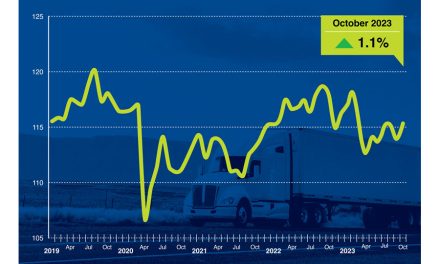Product Exports Go Big in U.S. Oil Balances
- Product exports reach 4.7 million barrels daily
- Gasoline exports get a boost from Mexican trade liberalization
- Propane exports are larger than gasoline outflows
- Natural gas withdrawals beat all expectations
Sincerely, Alan Levine, Chairman of Powerhouse

The Matrix
One of 2016’s biggest petroleum stories is the growth of product exports. Expanding exports—a reduction in supply available for the American market—help explain why excess stocks of petroleum products may have been reduced despite high levels of refinery use.
Product exports constituted a small part of U.S. oil balances for many years, running around one million barrels per day. In 2005, roughly coincident with the emergence of crude oil produced from shale, product exports started to grow. As 2016 closes, product exports are approaching 4.9 million barrels daily.

In 2015, the last full year for which data is available, 4.7 million barrels daily left the United States. About half of those exports remained in the Western Hemisphere with legacy partners Canada (955,000 barrels daily) and Mexico (690,000 barrels per day), accounting for 35% of total export trade. South America, notably Brazil (188,000 barrels daily) and Chile (149,000 barrels per day), took more than 632,000 barrels daily.
Distillate fuel oil accounted for 23% of exports for the week ending December 16, 2016. Its share actually fell compared with the same time in 2014 when distillate fuels accounted for 29% of U.S. product outflows.
Gasoline exports are approaching 800,000 barrels per day (b/d). According to the U.S. Energy Information Administration (EIA), Mexico represented the largest single recipient of U.S. gasoline exports at 363,000 b/d in the first half of 2016, up from 283,000 b/d in the first half of 2015. As part of the energy reforms passed in 2013, Mexico liberalized its energy sector, allowing market participants other than the state company Petroléos Mexicanos (Pemex). In January 2016, as part of the liberalization process, Mexico began to allow companies besides Pemex to import fuels, resulting in increased exports from nearby refineries along the U.S. Gulf Coast.

The expansion of domestic production has resulted in larger supplies of propane. Domestic demand has been relatively flat and price has been supported by a growing export market. The U.S. exported 842,000 b/d for the week ending December 16. This is 57% higher than at this time in 2014. Propane accounts for about 17% of all U.S. product exports.
Supply/Demand Balances
Supply/demand data in the United States for the week ending December 16, 2016, were released by the EIA.
Total commercial stocks of petroleum decreased 11.9 million barrels during the week ending December 16, 2016.
Decreases were reported in stocks of gasoline, K-jet fuel, distillates, residual fuel oil, propane and other oils. Stocks of fuel ethanol were unchanged from the previous report week.
Commercial crude oil supplies in the United States rose to 485.4 million barrels, an increase of 2.3 million barrels.
Crude oil supplies increased in three of the five PAD Districts. PAD District 1 (East Coast) crude oil stocks rose 0.7 million barrels, PADD 2 (Midwest) stocks grew 1.0 million barrels and PADD 5 (West Coast) crude stocks expanded 1.3 million barrels. PAD District 3 (Gulf Coast) experienced a draw of 0.4 million barrels and PADD 4 (Rockies) stocks fell 0.3 million barrels.
Cushing, Oklahoma, inventories decreased 0.2 million barrels from the previous report week to 66.3 million barrels.
Domestic crude oil production decreased 10,000 barrels daily to 8.786 million barrels per day.
Crude oil imports averaged 8.471 million barrels per day, a daily increase of 1.11 million barrels. Exports rose 72,000 b/d to 557,000 b/d.
Refineries used 91.5% of capacity, an increase of 1.0 percentage points from the previous report week.
Crude oil inputs to refineries increased 184,000 b/d. There were 16.658 million b/d of crude oil run to facilities. Gross inputs, which include blending stocks, rose 190,000 barrels daily to 16.892 million barrels daily.
Total petroleum product inventories saw a decrease of 14.2 million barrels from the previous report week.
Gasoline stocks fell 1.3 million barrels. Total stocks are 228.7 million barrels.
Demand for gasoline increased 395,000 b/d to 9.269 million barrels daily.
Total product demand increased 2.530 million barrels daily to 21.409 million b/d.
Distillate fuel oil supply decreased 2.4 million barrels; total stocks are 153.5 million barrels. National distillate demand was reported at 4.549 million b/d during the report week. This was a weekly increase of 519,000 barrels daily.
Propane stocks fell 3.1 million barrels to 92.5 million barrels. Current demand is estimated at 1.453 million b/d, a decrease of 50,000 barrels daily from the previous report week.
Natural Gas
According to the EIA:
Working natural gas stocks post largest December net withdrawals ever recorded. Net withdrawals from storage totaled 209 Bcf, compared with the five-year (2011 – 2015) average net withdrawal of 101 Bcf and last year’s net withdrawal of 33 Bcf during the same week. Working natural gas stocks total 3,597 Bcf, which is 78 Bcf above the five-year average and 226 Bcf below last year at this time.
This week’s storage withdrawal represents the largest December net withdrawal in the Weekly Natural Gas Storage Report (WNGSR) history, which dates back to late 1994. The substantial storage draw is related to a combination of cold weather, increased electric-sector capacity for natural gas, reduced natural gas production relative to last year and increased natural gas export volumes.
The large withdrawal was met with modest profit taking on NYMEX that reversed soon thereafter. Prices find resistance at $3.78. A further advance to $4.00 is likely, given patterns of lower production and loss of domestic supply to exports.
Futures trading involves significant risk and is not suitable for everyone. Transactions in securities futures, commodity and index futures and options on future markets carry a high degree of risk. The amount of initial margin is small relative to the value of the futures contract, meaning that transactions are heavily “leveraged.” A relatively small market movement will have a proportionately larger impact on the funds you have deposited or will have to deposit: this may work against you as well as for you. You may sustain a total loss of initial margin funds and any additional funds deposited with the clearing firm to maintain your position. If the market moves against your position or margin levels are increased, you may be called upon to pay substantial additional funds on short notice to maintain your position. If you fail to comply with a request for additional funds within the time prescribed, your position may be liquidated at a loss and you will be liable for any resulting deficit. Past performance may not be indicative of future results. This is not an offer to invest in any investment program.
Powerhouse is a registered affiliate of Coquest, Inc.
Was this helpful? We’d like your feedback.
Please respond to [email protected].
Copyright © 2016 Powerhouse, All rights reserved.










